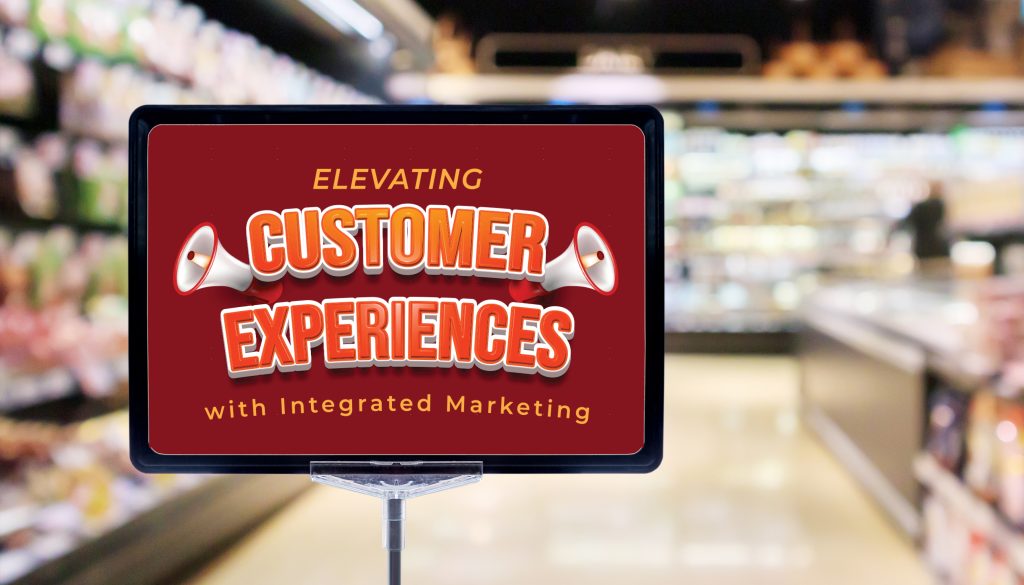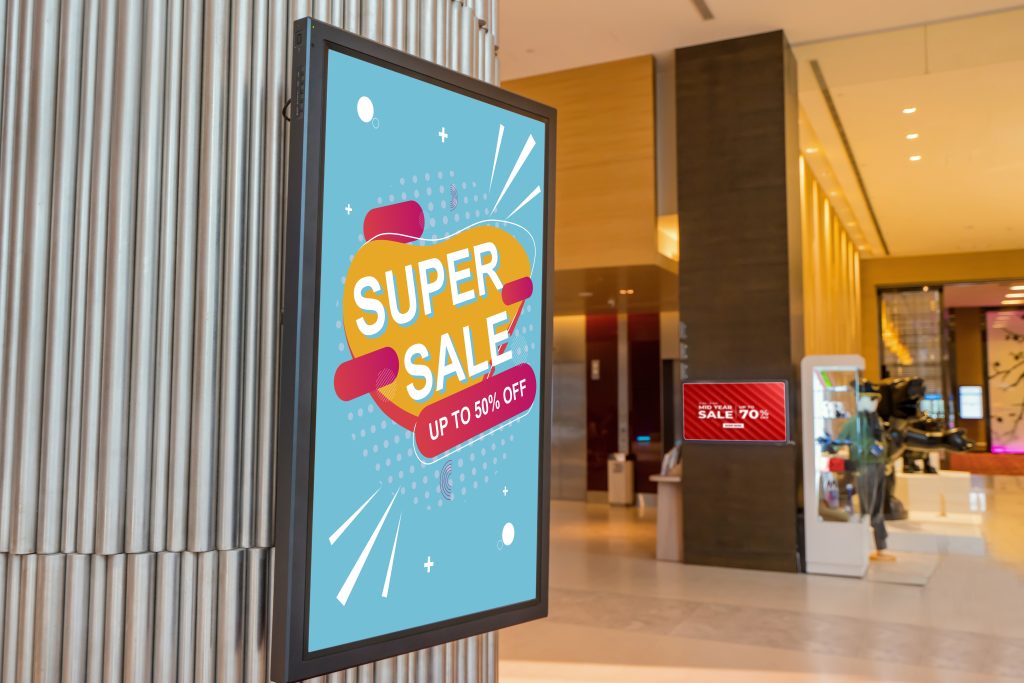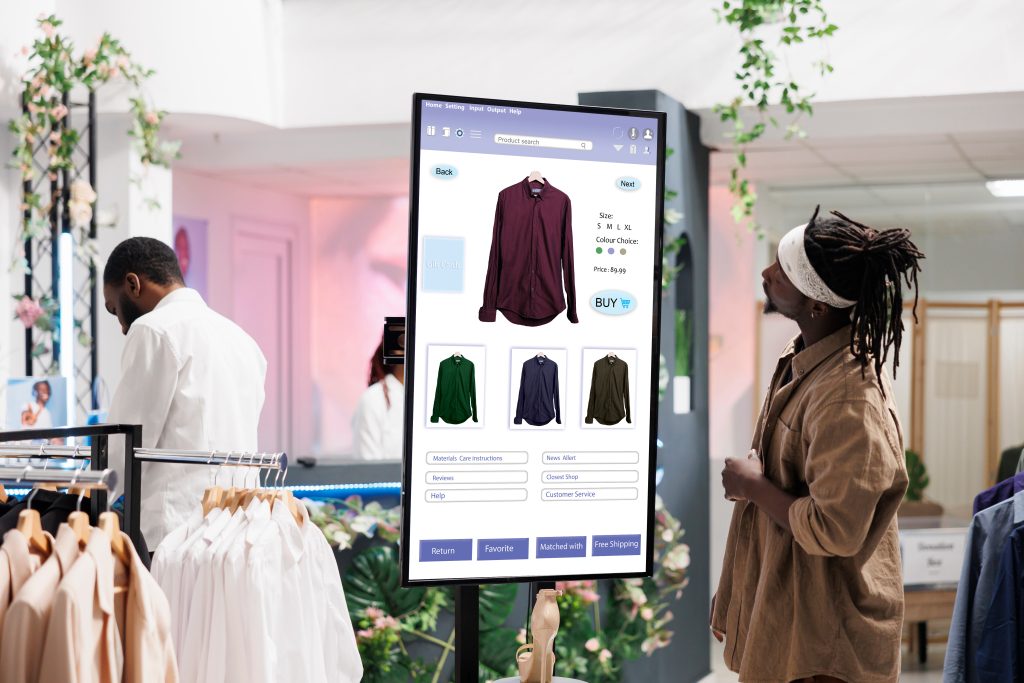
Elevating Customer Experiences with Integrated Marketing
In today’s retail environment, creating a unified and immersive customer experience is more crucial than ever. Businesses are constantly looking for innovative ways to engage customers and make their in-store experience memorable. One of the most effective strategies is integrated digital signage with overhead marketing—a synergy that enhances the sensory experience and guides customer behavior in a subtle yet impactful way.
The Power of Visual and Auditory Integration
Combining digital signage with overhead audio is not just about playing videos and music; it’s about creating an orchestrated experience that can influence mood, improve information retention, and drive specific consumer actions. Visual and auditory stimuli, when integrated correctly, can complement each other to create a holistic environment that aligns with the brand’s values and the ambiance it wants to project.

Enhancing Atmosphere
Digital signage can transform the visual aspect of a store, making it dynamic and engaging. When paired with overhead audio, these visuals are elevated into a multi-sensory experience. For instance, a digital display featuring a sunny beach scene paired with the sound of waves and seagulls overhead can transport customers to a summer vacation, ideal for a store selling beachwear or travel gear.
Consistency in Brand Messaging
The combination of consistent visual branding and audio messages ensures that the brand’s identity is reinforced throughout the customer journey in the store. Whether it’s through promotional videos, product highlights, or seasonal campaigns, the integrated messages help maintain a strong brand presence that customers can recognize and appreciate.
Influencing Purchasing Decisions
Audio messages can serve as a call to action that complements the visual content on digital signs. For example, while the digital signage displays the latest kitchen gadgets, overhead audio can announce a cooking demonstration at the end of the aisle. Such strategies can guide customers through the store and influence their purchasing decisions by creating a compelling case for the product.
Strategies for Integration

Tailored Content Creation
Creating content that is specifically designed for a dual-channel approach is key. Visuals and audio should be developed in tandem so that one naturally supports the other. Avoid simply repurposing content from one medium to the other without considering how they interact. For instance, if a digital sign promotes eco-friendly products, the overhead messages should reinforce this by sharing tips on sustainable living or announcing store-wide green initiatives.
Synchronized Timing
The timing of both audio and visual messages needs to be synchronized to avoid sensory overload or conflicting messages. Carefully schedule content to ensure that audio complements the visual message without overwhelming it. For instance, if a promotional video plays every 15 minutes, the overhead announcements can be timed to follow up with additional details or a related promotional discount.
Zone-Specific Messaging
Different areas of a store may cater to different interests and demographics. Tailoring the digital signage and overhead messages to specific zones can enhance the relevance and effectiveness of the content. For example, the children’s section could feature animated signage with fun, upbeat music, while the electronics section could have tech-focused content with a modern, sleek soundtrack.
Interactive Elements
Enhancing customer interaction with both digital signs and overhead messages can significantly boost engagement. Interactive digital kiosks can invite customers to explore products or services further, while overhead audio can prompt responses or actions based on the digital content displayed. This interaction not only makes the shopping experience more engaging but also helps gather customer preferences and feedback.
Measuring Impact and Adjusting Strategies

Customer Feedback
Regularly gather customer feedback through surveys, focus groups, or direct feedback at the point of sale. Understanding how customers perceive the integrated audio-visual experience can provide valuable insights into what works and what doesn’t.
Sales Data Analysis
Monitor the sales data from products featured in both digital signage and overhead marketing. Analyzing trends and changes in sales figures after implementing integrated strategies can help quantify their effectiveness.
Technology Upgrades
As technology evolves, so should the integration strategies. Staying updated with the latest digital signage and audio technologies can provide new opportunities for creating more immersive and effective marketing strategies.

Integrating digital signage with overhead marketing represents a strategic approach to creating a unified and enriched customer experience. This combination harnesses the strengths of both visual and auditory marketing, making the retail environment more engaging and responsive to customer needs. By thoughtfully designing and implementing these integrations, businesses can enhance brand perception, influence customer behavior, and ultimately drive sales in an increasingly competitive market.
